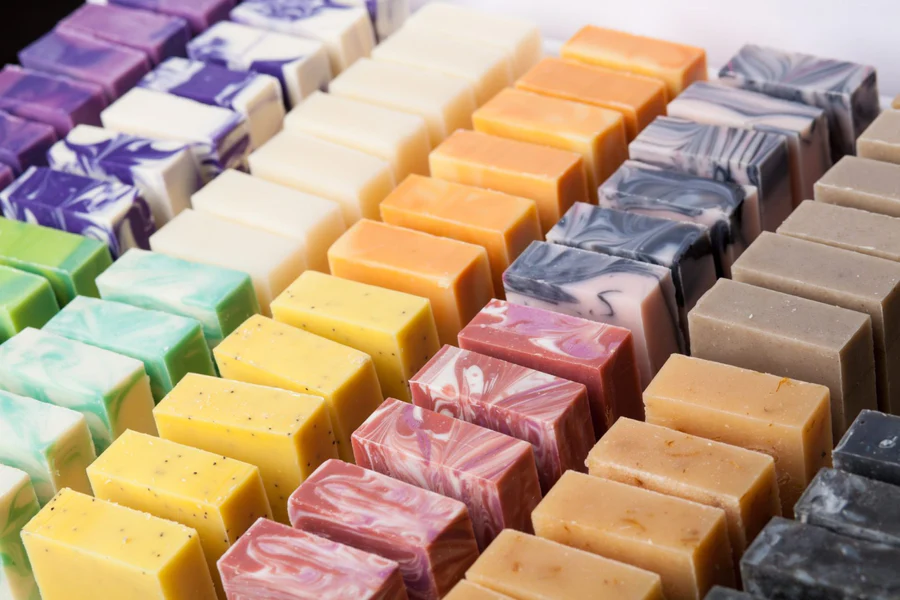Soap making is an ancient craft that has evolved into a fascinating modern-day art form. The original blog post by Practical Self Reliance is an invaluable resource for anyone who wants to venture into the world of soap making. It’s a comprehensive guide that covers everything from the very basics to advanced techniques, ensuring you’re well-equipped to create your own soap masterpieces.
Why Make Soap at Home?
- Self-Sufficiency: Making your own soap is a step towards a more self-reliant lifestyle. It’s empowering to create something so essential from scratch.
- Customization: The beauty of homemade soap is the freedom to customize. You can choose the oils, scents, and even the colors that suit your skin type or aesthetic preferences.
- Quality Control: When you make your own soap, you have complete control over the ingredients. This ensures that your soap is free from harmful chemicals and preservatives commonly found in commercial soaps.
The Basics: Ingredients and Tools
- Ingredients: The primary ingredients are oils (such as olive, coconut, and palm), lye, and water. Each oil brings its own unique properties to the soap, affecting hardness, lather quality, and moisturizing ability.
- Tools: Essential tools include scales for precise measurements, thermometers to check the temperature of your oils and lye water, mixing bowls, and molds to shape your soap.
The Soap Making Process
- Safety First: Safety is paramount. Always wear protective gloves and goggles to protect yourself from the caustic nature of lye.
- Measuring: Precision is key. Accurately measure all your ingredients to ensure the correct chemical reaction between the lye and oils.
- Mixing Lye and Water: This is a crucial step. Always add lye to water, never the other way around, to prevent a dangerous reaction.
- Combining Ingredients: Once your lye water and oils have reached the desired temperatures, it’s time to mix them together. This is the stage where the magic happens!
- Adding Extras: This is where you can get creative. Add colors, essential oils, or even small items like flower petals or oatmeal for exfoliation.
- Molding and Curing: After mixing, the soap is poured into molds. It needs to cure for several weeks to complete the saponification process.
Advanced Techniques
- Hot Process Soap Making: This method speeds up the curing time but requires constant attention to prevent the soap from burning.
- Melt and Pour: This is a fantastic option for beginners who aren’t comfortable handling lye. It involves melting a soap base and adding your choice of colors and fragrances.
- Adding Natural Fragrances and Colors: If you’re looking for a more natural approach, essential oils and natural clays can be used to add fragrance and color to your soap.
Tips for Success
- Soap Calculator: Before you start, it’s a good idea to double-check your recipe with a soap calculator. This ensures that the ratio of lye to oils is correct, making your soap safe for skin.
- pH Testing: It’s crucial to test the pH of your finished soap to ensure it’s skin-safe. A pH between 7-10 is generally considered safe for skin.
- Oil Experimentation: Don’t be afraid to experiment with different oils. Each oil brings its own unique properties to the soap, so feel free to mix and match.
Beginner Soap Recipes
- Lavender Soap: A calming soap perfect for relaxation.
- Goats Milk and Honey Soap: Ideal for sensitive skin, providing extra moisturization.
- Apple Cider Soap: A fall favorite that smells divine.
- Aloe Vera Soap: Great for soothing irritated skin.
- Yarrow and Witch Hazel Soap: Known for its healing properties.
Additional Resources
- Natural Bath Bombs E-Book: Expand your homemade body product repertoire with bath bombs.
- Natural Soapmaking E-Book Collection: A collection of e-books to deepen your soap-making knowledge.
- More Easy Homemade Body Products: From herbal salves to lotions, broaden your DIY body care products.
Filling the Gaps
While the original post is incredibly detailed, it could benefit from:
- Case Studies: Real-life examples of people who have successfully made soap at home would add a personal touch.
- Troubleshooting Guide: A section dedicated to solving common soap-making issues would be invaluable for beginners.
- Cost Analysis: A detailed breakdown of the costs involved in soap making can help potential soap makers budget effectively.
- Sustainability: Tips on sourcing sustainable and ethical ingredients would make the guide even more comprehensive.
- Legal Aspects: For those interested in turning their hobby into a business, a section on the legalities of selling homemade soap would be beneficial.
Conclusion
Soap making is not just a hobby but a rewarding experience that allows you to take control of what goes on your skin. With this comprehensive guide, you’re now ready to dive into the world of soap making!
For the full original post, please visit Practical Self Reliance.


